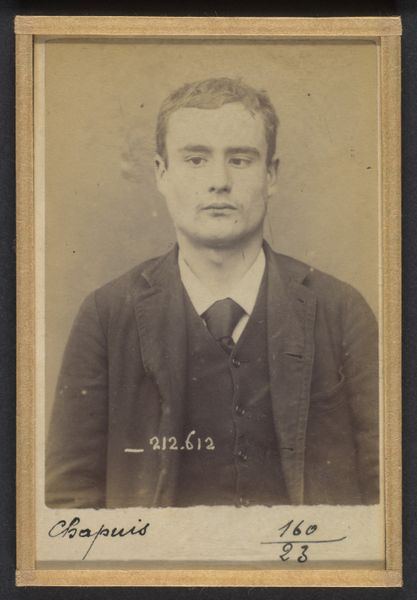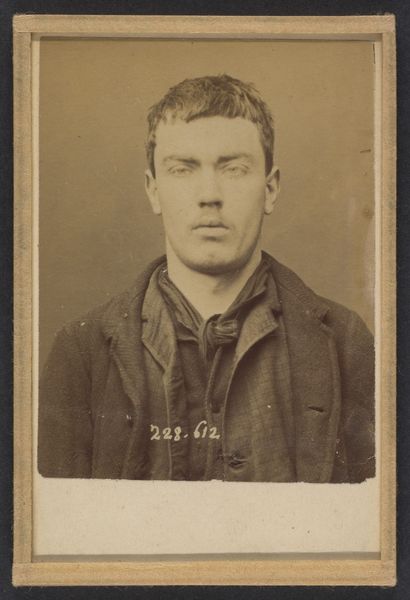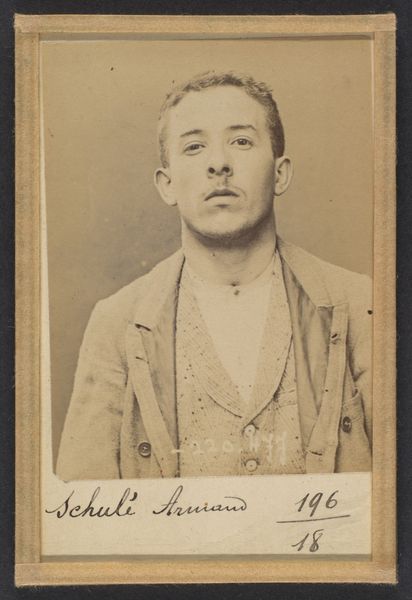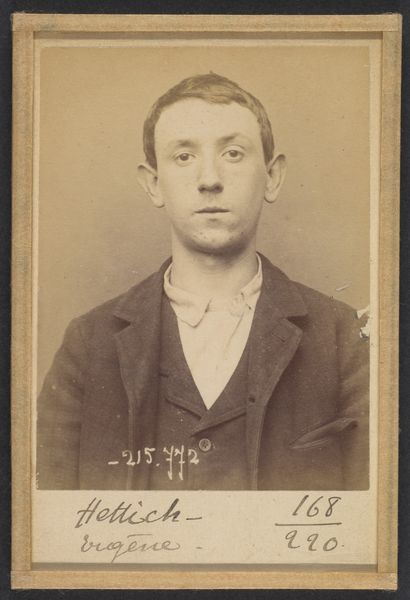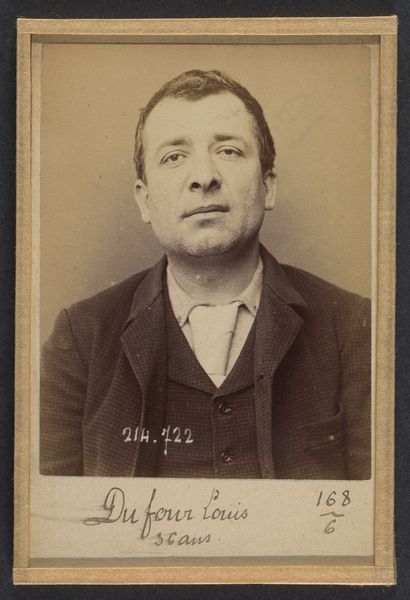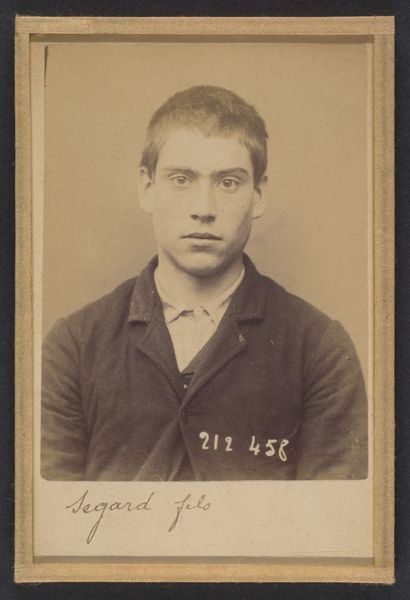
Cabuzac. Jean. 25 ans, né le 23/7/68 à Ivry la Bataille (Eure). Ciseleur. Anarchiste. 12/3/94. 1894
0:00
0:00
daguerreotype, photography
#
portrait
#
portrait
#
daguerreotype
#
photography
#
history-painting
#
realism
Dimensions: 10.5 x 7 x 0.5 cm (4 1/8 x 2 3/4 x 3/16 in.) each
Copyright: Public Domain
Curator: This intriguing piece, dated 1894, is entitled "Cabuzac. Jean. 25 ans, né le 23/7/68 à Ivry la Bataille (Eure). Ciseleur. Anarchiste. 12/3/94." and is attributed to Alphonse Bertillon. It's currently housed at the Metropolitan Museum of Art. Quite the descriptive title, isn't it? Editor: It is. And my immediate impression is somber, almost haunting. The sepia tone enhances a feeling of historical weight, a certain coldness in the man's gaze. Curator: Precisely. This photograph is more than just a portrait; it's a mugshot, a product of Bertillon's anthropometric system designed for identifying criminals. Editor: Ah, now it clicks. The clinical precision makes sense when framed within its social context, within the policing and categorization of bodies. A stark document about the state's power to record and classify its citizens. But what of Cabuzac, the ciseleur, the craftsman, the anarchist? Curator: His listed profession—a metal engraver, ciseleur—contrasts sharply with his label as an anarchist. It brings forth a tension: an artist possibly turning to political rebellion. We can’t ignore the climate in France during that time; labor unrest, rising class tensions, all of it feeding into anarchist movements. Editor: I am curious about his craft. Ciselure is a highly skilled, labor-intensive process of sculpting metal, which requires intense physical focus. How does that physicality shape his political beliefs? Was his choice a conscious subversion through manual labor, or was it merely a means of survival in the late 19th-century? Curator: That is a good question, what was the nature of labor during that time? I see this image less as a window into the soul and more a mirror reflecting back the anxieties of a society grappling with modernity, with order against chaos. Editor: True, the photograph itself as a mechanical reproduction also speaks volumes, highlighting the era’s shift toward mass surveillance and standardized classification systems. So much contained in one seemingly straightforward portrait. Curator: Indeed. It makes you consider the broader political landscape of artistic practice. Editor: An object worthy of contemplation.
Comments
No comments
Be the first to comment and join the conversation on the ultimate creative platform.



